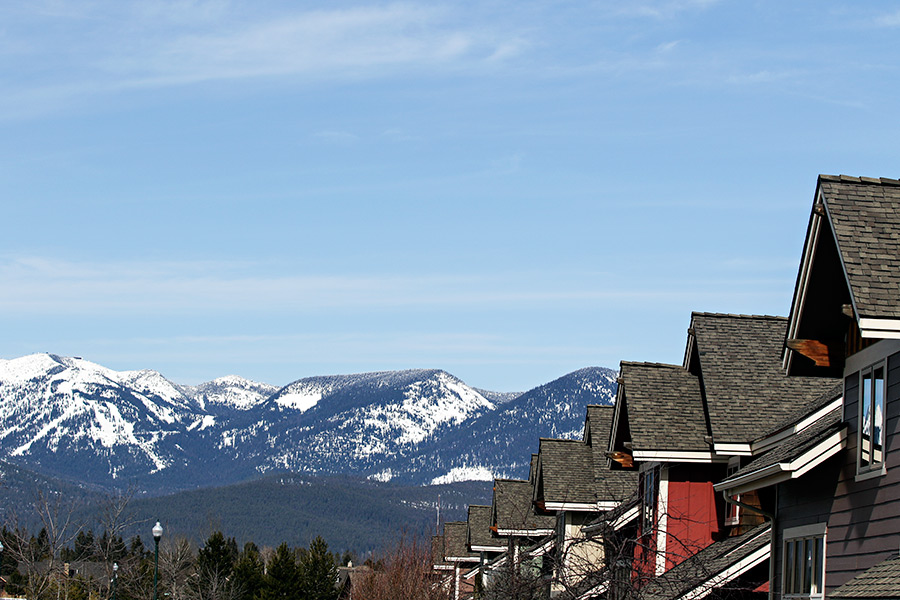The Whitefish City Council has tabled a proposal to allow workforce housing in the city’s secondary business district, stalling the measure as the community grapples with a dearth of affordable housing and a shortage of service workers while also reporting record growth.
Under the proposed changes to city zoning, Whitefish would have allowed multifamily and workforce housing in above-ground commercial properties in its secondary business district and conditionally permit workforce housing in the district.
The proposal also provided a definition of workforce housing and a parking standard for such housing.
However, council tabled the ordinance with a 4-1 vote. In the motion to table, Councilor Richard Hildner said the city should complete the second phase of its workforce housing strategy and flesh out the definition of “affordable housing” before passing text amendments to its zoning policy.
“The affordability issue is not well-defined or well-discussed,” Hildner said.
He also said a city committee working to rewrite Whitefish’s planned-use development policies should issue its recommendations before city officials move forward.
The Planning Board on Jan. 19 unanimously recommended approval of the amendments and added three additional stipulations. The board recommended that workforce housing located on the same parcel as the primary employer should be reviewed as an administrative conditional-use permit, meaning the city zoning administrator would review and issue the permit.
The board also clarified that rentals of fewer than 30 days won’t be permitted.
The secondary business zone south of downtown Whitefish has the most land available for development, and there is a greater need for additional residential units than for more commercial development that could compete with downtown, according to Wendy Compton-Ring, senior planner for Whitefish.
Under current zoning law, the only way one can develop multi-family homes is to apply for a Planned Unit Development, which requires a more rigorous standard of review, Compton-Ring said.
While nearly every member of the public who spoke at the Whitefish City Council’s Feb. 6 meeting agreed that affordable workforce housing is a dire need in the community, opponents of the ordinance said it was “premature.”
“We think multifamily housing and mixed-use development is development, but this amendment as proposed is not the one that will accomplish those and provide the kind of quality development that Whitefish is seeking,” said Mayre Flowers, executive director of Citizens for a Better Flathead.
Kristen Stokes, general manager of The Best Western Rocky Mountain Lodge and Pine Lodge hotels, urged council members to approve the zoning amendments, saying the company intends to use a two-story building on the back of its property for seasonal employees.
“Over the last six-seven years it has been increasingly difficult to find employees due to their need to find housing in the area,” Stokes wrote to council members in a letter. “We ask you to please consider making the amendment that would allow us to use an already constructed building for Workforce housing for our two hotels. This amendment will enable us to provide for our staffing needs while relieving the pressure on seasonal housing in the community.”
Rhonda Fitzgerald, owner of the Garden Wall Inn in Whitefish, was among several opponents of the measure who said the zoning text amendments were premature but acknowledged the need for more affordable real estate in the city’s inventory.
A housing needs assessment conducted last year by the Whitefish Chamber of Commerce in partnership with the city indicated 980 affordable housing units are needed in Whitefish by 2020 to make up for the current shortage and accommodate future housing needs.
About 245 units per year are needed to address current workforce housing shortages and keep up with future demand, according to the assessment. Of these, about 605 units (62 percent of the total units) should be provided at more affordable prices than supplied by the market to meet the full range of needs of the local workforce, according to the assessment.
Meanwhile, Whitefish Planning Director Dave Taylor reported a banner year for building construction and planning projects in Whitefish in 2016, which has had a direct impact on the affordable housing crisis.
“The deficit of available residential units has translated into 10-year highs in duplex and multifamily residential development, which counted for more than two-thirds of our residential new construction,” Taylor wrote in the Whitefish Planning and Building Annual Report, which highlighted development activity last year.
Total residential development more than doubled in 2016 with 156 new dwellings permitted, compared to 67 in 2015. That counted for $32 million in community investment.
Commercial construction continued to increase with 11 new commercial buildings, up from four in 2015, totaling over $19 million in estimated project costs.
Total valuation of all permits issued last year was around $63 million, Taylor said.
